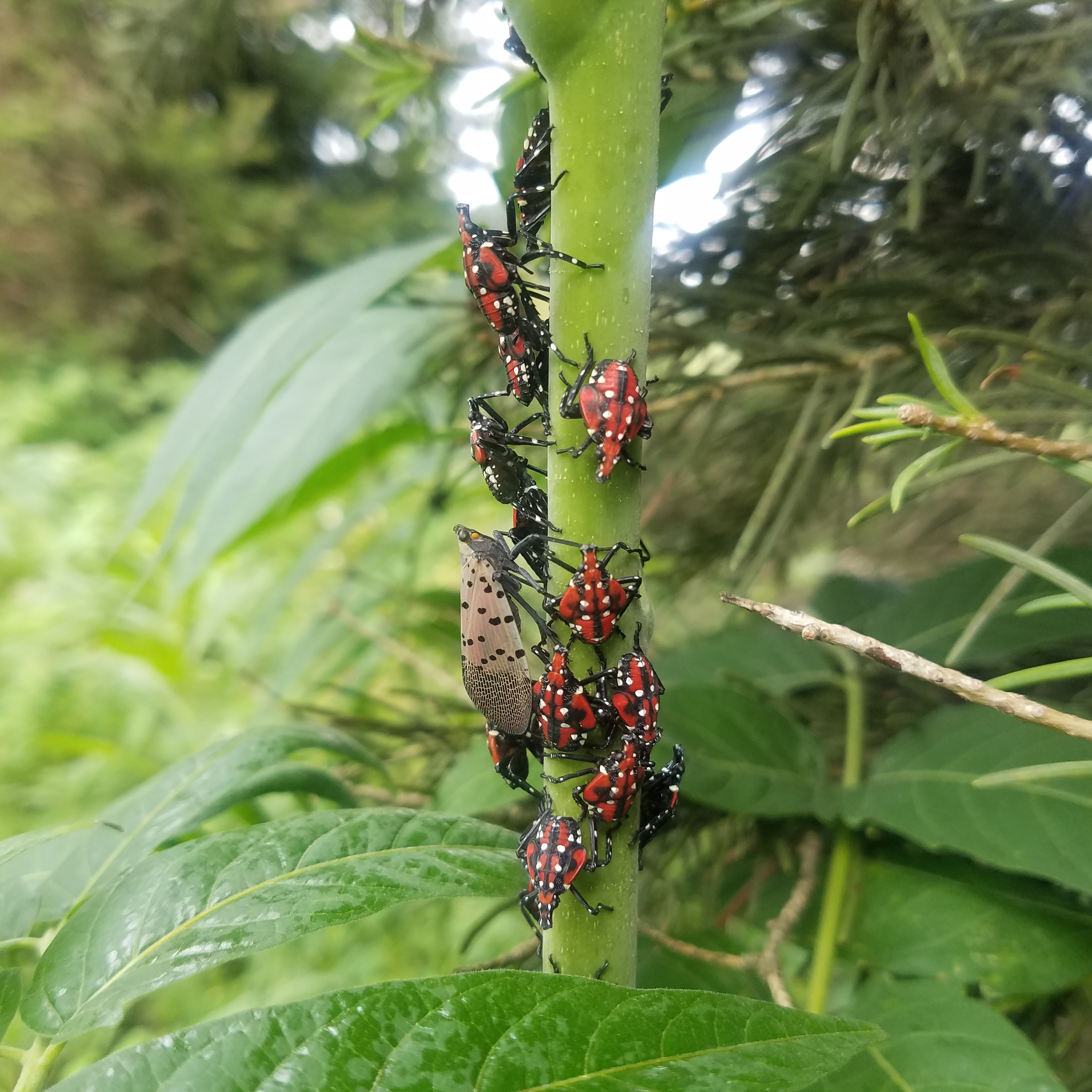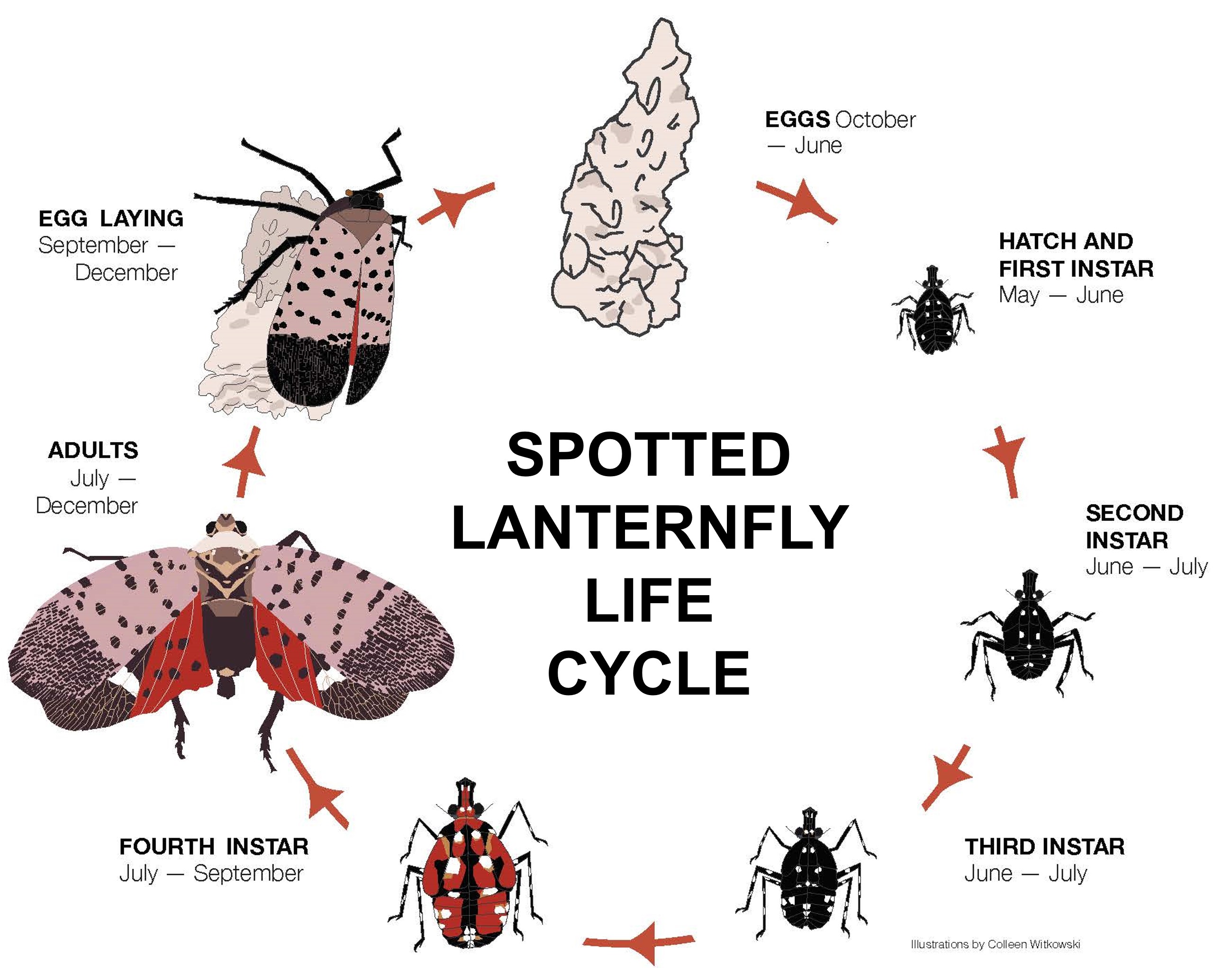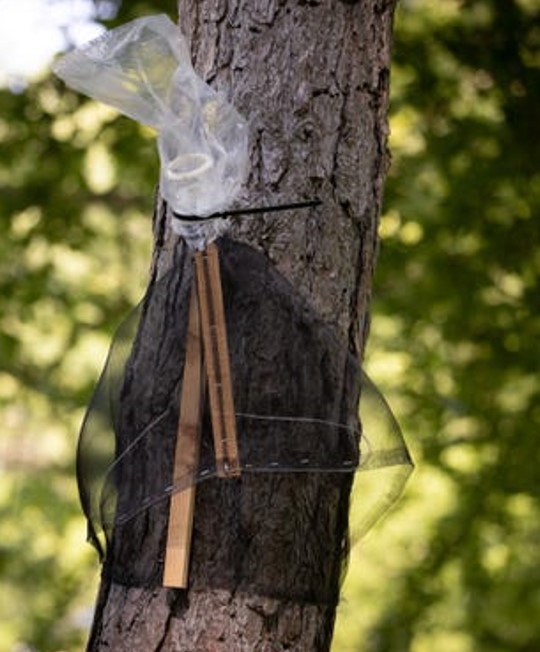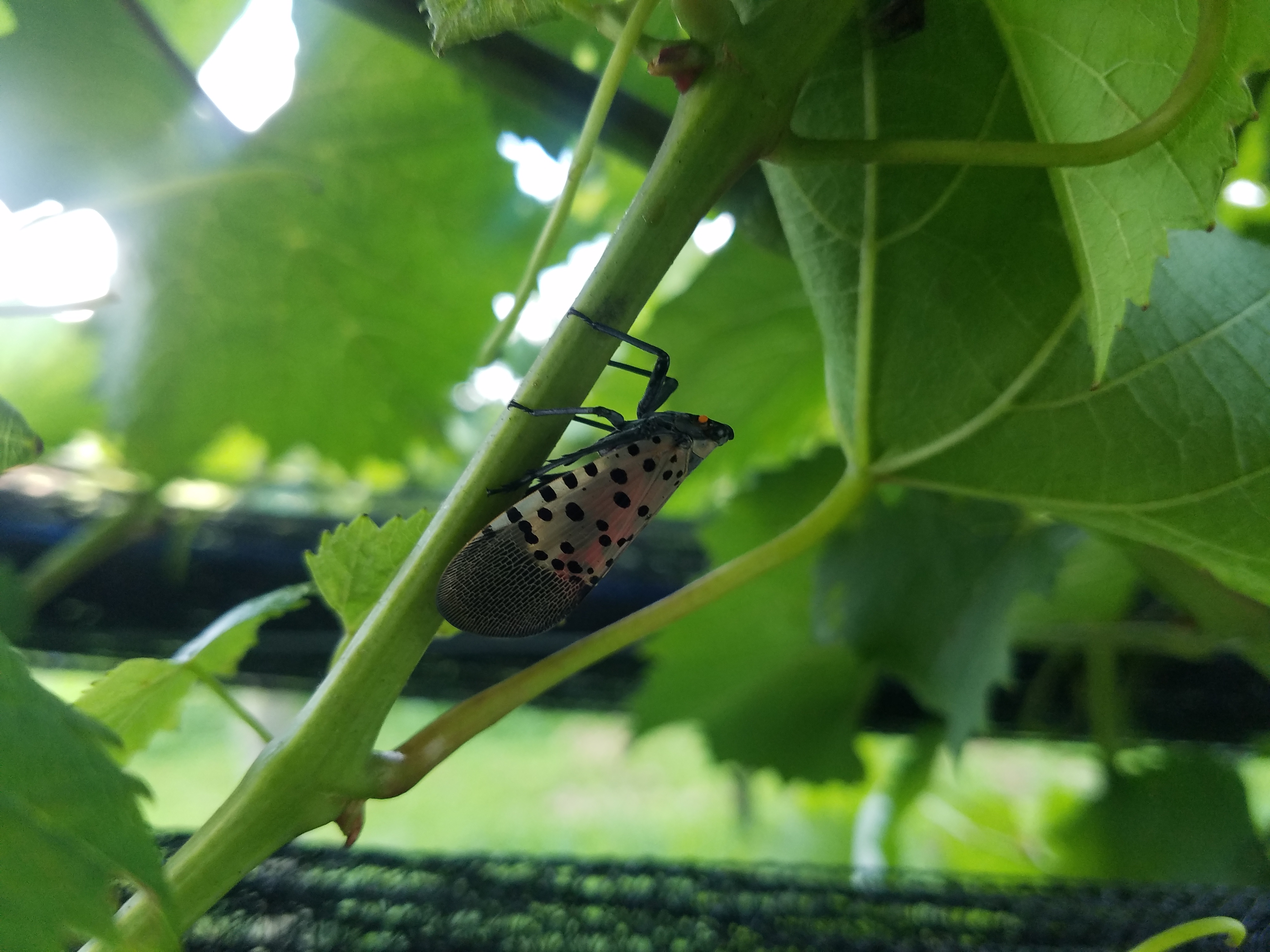
Spotted lanternfly: New pest alert for Michigan tree fruit growers
DOWNLOADMarch 1, 2023 - Heather Leach and Julianna Wilson, Michigan State University, Department of Entomology

Spotted lanternfly (SLF) is an invasive planthopper, first found in Pennsylvania in 2014. It has since spread and is now found throughout Pennsylvania, New Jersey, New York, Maryland, Delaware, and Virginia. In 2022, a small breeding population of SLF was found in Oakland County, Michigan. Small SLF populations also exist in neighboring states of Ohio and Indiana. SLF is native to parts of Asia and has a broad host range including grapevines, maples, walnut, and hops. They injure plants by sucking sap (like a large aphid). While SLF feeding has occasionally been observed on tree fruit (peach and apple) in Pennsylvania, no economic damage has been reported in tree fruit. However, high populations of SLF have caused serious damage in vineyards and growers have been reporting that SLF is difficult to control. SLF is also considered a significant nuisance pest in residential landscapes in regions where high populations exist. SLF poses a significant threat to the Michigan grape industry, and we are asking all growers to be on the lookout for this important new pest.
Identification & life cycle

SLF produces one generation per year. Eggs overwinter and are expected to tolerate very cold conditions, including Michigan winters. In spring (early May), eggs hatch into black nymphs with white spots that resemble small spiders. As they feed, they begin to grow larger and have 4 nymphal instars before reaching adulthood. The last instar is red with white spots and black stripes, and is about the size of a dime. The adults emerge in late July and are ~1 inch long. Adults have black bodies, light grey wings with black spots, and black wing tips with grey veins. Their hind wings are red, black and white, and when exposed, they resemble a colorful moth. Adults walk more than they fly and keep their wings held behind their back when they are at rest. Both nymphs and adults have long legs and are strong jumpers. SLF is likely to hide if it sees you approaching and will jump when prodded. Adults are present and observable from July until they are killed by the first hard freezes in fall. Egg laying begins in September and continues until adults are killed by hard freezes.
Feeding damage
SLF belongs to the planthopper family in the Hemipteran order of insects, along with stink bugs and aphids. SLF feeds through a piercing-sucking mouthpart and sucks sap from trunks, branches, and leaves. SLF do not feed directly on fruit. SLF can cause or exacerbate plant stress, including wilting, leaf yellowing, and leaf loss. In grapevines, high levels of SLF feeding can cause depletion of carbohydrates, reduced winter hardiness, and yield reductions. No feeding damage has been reported in tree fruit orchards in the U.S. SLF feeds on sugar-rich plant sap and excretes a sugary frass commonly referred to as ‘honeydew’, similar to aphid and scale pests. However, SLF is a large insect when compared to the aphids and scale insects that commonly affect fruit crops, excreting much larger quantities of honeydew. SLF feeding results in an accumulation of sticky honeydew and subsequent sooty mold growth that occur anywhere around where SLF is feeding.
High levels of SLF in orchards could be a nuisance for harvesters and could pose quarantine regulations for shipments and/or processors. However, high populations of SLF have been seldom observed in orchards in the U.S. so far. SLF feeding on newly planted fruit trees could cause establishment failure or increased sensitivity to cold; however, this has not been observed in a field setting to-date. It is important to remember that this pest is new to the U.S., and we will learn more about the risk it poses and best management practices as time and research opportunities increase. Our aim is to keep our guard up, but not to panic.
Spotted lanternfly preferred hosts: tree of heaven, grapevine (wild and cultivated), silver and red maple, black walnut, butternut, birch, willow, sumac.
Monitoring
Currently, small populations of SLF are present in Oakland County, Michigan. They are believed to have arrived in Michigan via egg masses on an industrial shipment. The largest U.S. populations to-date are within Pennsylvania and New Jersey, and populations are expected to continue to spread throughout the U.S., with many states on the lookout. Both natural and human-assisted movement is believed to be contributing to their spread. Efforts in Michigan are currently focused on monitoring to detect and treat new populations to slow the spread and establishment of this pest in our state.

Monitoring can be done through either visual scouting or the installation of circle traps. Circle traps act as a funnel on tree trunks, where SLF nymphs and adults are funneled into the trap as they walk upwards on trees. While the SLF host range is large, SLF have a strong preference for: tree of heaven (an invasive, fast-growing tree found sporadically throughout Michigan), grapevines, black walnut, silver maple, birch, and willows. For monitoring in Michigan, we recommend placing circle traps on one of these preferred hosts to increase your chances of detecting a population. Monitoring can begin in May, when eggs hatch, and continue throughout the growing season until November, when new eggs are laid. While monitoring for egg masses is possible throughout the winter, they are harder to detect as they are grey/brown splotches that can resemble lichen or tree bark.
Management
If you see only a few SLF, they are easy to kill by squishing adults or immature stages and scraping to remove egg masses. To-date, growers are principally reliant on the use of chemical control for management. Fortunately, there are many classes of insecticide that are effective against SLF, including oils, neonicotinoids, carbamates, and pyrethroids. Generally, the adult stage of SLF is the most problematic because of its increased mobility and can often necessitate repeated insecticide applications in areas with high populations. Orchard and vineyard scouting should continue past harvest dates until the end of September at least. Check for egg masses while pruning your orchard. In anticipation of the need for pesticides to treat for SLF, MSU is working with state and industry partners to include use rates and instructions for SLF management on relevant pesticide labels.
How you can help
We need eyes in the field to help us find new detections of SLF in Michigan. Consider training your employees in the identification of SLF or have an identification poster on display. Pay attention to trees and vines in the wooded edge of your orchard that are favorite hosts to SLF (like maple, grapevines, and tree of heaven) throughout the year, and report any sightings you see. Humans are great movers of insects, including SLF. High traffic areas including agritourism (e.g., wineries, U-pick orchards, etc.) could contribute to the movement of this insect. Increased awareness and detection of SLF can help slow the spread and allow for the development of effective management practices.
What to do if you find one
Significant efforts are being made to “seek and destroy” detections of SLF in Michigan to delay their movement in the state. If you think you have found SLF, note your location – either an address or GPS coordinates of the location. Try to capture the insect and put it into a container. If you can’t capture it, take a picture of it. Report your finding to Eyes in the Field, a website monitored by officials at the Michigan Department of Agriculture and Rural Development. You may also report your sighting via your local MSU Extension office.


Resources
For more information on spotted lanternfly, visit https://www.canr.msu.edu/ipm/invasive_species/spotted-lanternfly or www.stopSLF.org
Accommodations
This work is supported by the Crop Protection and Pest Management Program [grant no 2021-70006-35450] from the USDA National Institute of Food and Agriculture. Any opinions, findings, conclusions, or recommendations expressed in this publication are those of the author(s) and do not necessarily reflect the view of the U.S. Department of Agriculture.



 Print
Print Email
Email